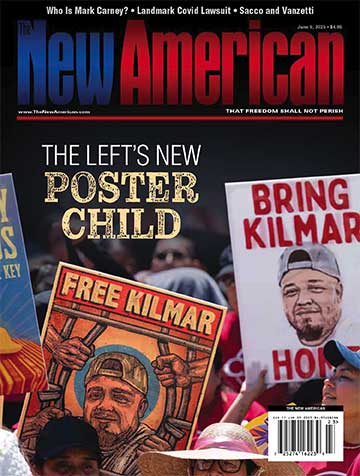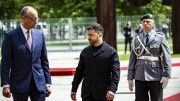
During the Cold War, well-publicized antagonisms between East and West dictated that the United Nations not be able to establish its own permanent UN military operations. UN military authorizations may be vetoed by any of the five permanent Security Council members. The Soviet Union, which could have vetoed UN entry into the Korean War, actually permitted it by temporarily boycotting the world body. No full-scale direct UN military action has occurred since — only UN peacekeeping activity.
But Articles 52-54 of the UN Charter authorize forming “Regional Arrangements,” precisely what NATO (the North Atlantic Treaty Organization) is. In its preamble and 14 short articles, the 1949 NATO Charter demonstrates its UN genesis in five places. Marketed to the American people as only a military alliance designed to check any westward movement of the Soviet Bloc, NATO won immediate — though not unanimous — approval in the U.S. Senate. When the USSR supposedly dissolved, NATO should have as well, but its founders had other plans.
On March 19, 1949, Secretary of State Dean Acheson stated that the pact was “designed to fit precisely into the framework of the United Nations,” that it was “subject to the overriding provisions of the United Nations Charter,” and that it “is an essential measure for strengthening the United Nations.”
After Yugoslavia’s Communist government dissolved in the early 1990s, ancient rivalries among the region’s ethnic and religious groups degenerated once again into bloody conflicts. With Russia, then an ally of one of the combatants, potentially standing in the way of UN action, the world planners turned to NATO, where no member nation has a veto. When President Clinton addressed our nation on November 27, 1996, he lamented that the UN’s early peacekeeping mission in Bosnia had failed because its personnel didn’t “have the authority to respond to any violations of the military provisions of the peace arrangement.” But, he gladly reported, NATO had “overwhelming force” capability on which NATO members could rely.
NATO’s forces, especially its air wing, had already been employed in Bosnia when U.S. Admiral Leighton Smith declared in September 1995 how pleased he was to be “carrying out the mandates of the secretary general.” But was he referring to the UN or NATO secretary-general? It didn’t really matter, since each is ultimately a UN official. In the fall of 1996, former German Foreign Minister Hans-Dietrich Genscher stated in a Washington Times column: “NATO’s decision to send forces to Bosnia based on a UN Security Council decision is to be applauded.” NATO was then, and is still today, the UN’s military force.
Moreover, on December 1, 1996, the Associated Press reported that U.S. General George Joulwan, NATO’s supreme commander, dutifully went to NATO headquarters in Brussels “seeking authority to begin moving the first soldiers into place” in Bosnia. Those 20,000 U.S. troops and forces from 15 other NATO countries have never worn the UN blue helmets but, without question, they are a UN force.
America’s top military officials are trained at Fort Leaven-worth’s School of Advanced Military Studies. One of their instructors, military theorist James J. Schneider, authored “Ambushing the Future” for the April 1995 issue of Strategic Warfare magazine. Therein, Schneider claimed that “the future will be dominated by a single overwhelming presence — the United Nations.” But recognizing the UN’s inability to have its own military force, he added, “Even now we can anticipate the transformation of NATO from a regional security arrangement to a future role as the UN’s military arm.” The “future role,” of course, had already arrived.
Consider where all of this is heading. On August 27, 2001, New York Times columnist Thomas Friedman called for “NATO to occupy the West Bank and Gaza and set up a NATO-run Palestinian state.” Note that this outspoken pro-UN internationalist doesn’t envision the UN itself implementing his suggestion. There is no UN army to do what he wants. But there is a NATO armed force.
In keeping with the developing awareness that NATO can do what its UN parent can’t accomplish, NATO’s 19 member nations expressed formal willingness on November 21, 2002 “to take effective action … without conditions or restrictions” if Iraq refuses “fully and immediately” to comply with UN Security Council demands. The UN doesn’t need its own army; it already has NATO. And NATO has already begun to “project its will” beyond the geographic limits of member nations.
NATO began with 12 members and grew to 16 in 1982. All were from North America and Western Europe. In 1999, expansion into the former Soviet Bloc occurred when Poland, Hungary, and the Czech Republic were added. Plans announced in November 2002 called for adding seven more nations in 2004 (Estonia, Latvia, Lithuania, Slovakia, Romania, Slovenia and Bulgaria), bringing the total to 26.
NATO now has more nations from which to draw its forces and fewer nations to stand up to its growing military strength. In the process, the UN has acquired through the back door what it has not been able to achieve openly.




